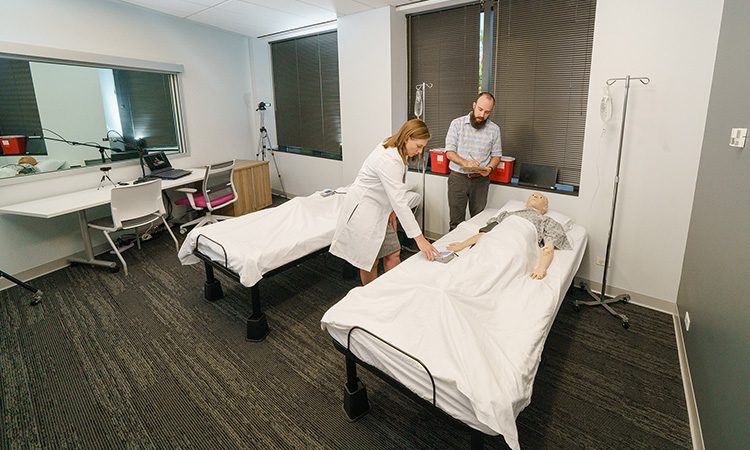Blogs
Medtech human factors & regulatory compliance
Design safer medical products with confidence.
These blogs demystify FDA expectations, share lessons from the field, and offer strategies to reduce risk and improve device usability.
5 tips for designing AI-enabled SaMD that HCPs trust
Design an AI-enabled software as a medical device that offers cutting-edge capabilities and earns the trust of healthcare professionals, ultimately improving patient care.
Human factors testing for OTC drugs and non-prescription medical devices
As the field of human factors continues to evolve, so must our approaches to testing and study design. While the FDA’s 2013 guidance laid the groundwork for study design and methodology, recent discussions and conference presentations have prompted a shift in how we approach OTC HF testing, leading to more comprehensive and realistic assessments of these products.
The FDA’s PCCP: A game changer for AI-enabled medical device software
Learn how incorporating human factors principles in developing the PCCP approach can improve the chances of successfully implementing a PCCP.
Integrating FDA’s new cybersecurity guidance into medical device human factors engineering processes
Connected medical devices offer benefits but also pose cybersecurity risks that can disrupt patient care. The FDA’s new guidance highlights the need for strong cybersecurity measures and provides recommendations for integrating these measures into human factors engineering to ensure device safety.
Human factors optimization: How to leverage HF researchers in your medtech team
As a medtech professional, you can enhance your team’s capabilities by engaging human factors researchers to create front-end documentation, alleviate research workloads, and provide regulatory guidance.
Enhancing medical device safety and effectiveness: Leveraging knowledge tasks in healthcare UX and human factors research
Discover why implementing knowledge tasks is essential for evaluating user comprehension of critical safety information in medical device validation. Learn how to effectively assess these tasks to enhance product safety and effectiveness in your healthcare UX research.
Integrating AI with care: FDA reveals focus areas for forthcoming guidance on AI products
As AI technology use expands within the healthcare industry, FDA focus areas will play an important role in ensuring safe implementation.
Follow this framework to ensure your SaMD conforms to HF standards post-release
Navigate regulatory nuances for your SaMD by following a structured approach to maintain compliance post-release.
What medtech design teams need to know about AI regulations
China and the European Union are regulating AI ethics. The mandate for medtech design teams: build AI-powered products that meet ethics standards and inspire user trust.
3 crucial aspects of submitting a successful human factors engineering package to the FDA
Regulations and guidance for human factors research and medtech have evolved, but the goals remain unchanged. The right research partner makes navigating FDA rules simple.
How collaboration builds value in medical device human factors research
Instead of a top-down, one-size-fits-all approach to research, collaboration between manufacturers and human factors research teams can create trusted partnerships and a focus on designing valuable products.
4 make-or-break considerations for health IoT ecosystems
To boost adoption of IoT devices, medical device manufacturers should consider four key questions to gain insights into user contexts and perceptions.
Improve medical device safety with these packaging design tips
Safe and effective medical device use starts with designing packaging that considers the unique needs of its users.
5 tips to mitigate use-related risk for pre-filled syringes and other injection devices
Attention to logistics, thoughtful product and research study design, and iterative user testing can help mitigate use-related risk with injection devices.
New Blog Series: Bold Insight and Orthogonal share insights about getting medical devices to market faster
Given the multidisciplinary nature of MedTech and connected health, we have the opportunity to work with a wide variety of professionals including engineers of many stripes, scientists, researchers, designers, experts in regulatory, and quality management. Our...
Is FMEA inadequate for human factors analyses?
A “traditional” risk assessment does not meet the needs of FDA-required human factors analyses.
UX research reveals common concerns from HCPs about telehealth technology
Our research has shown a trend in healthcare provider feedback regarding mHealth alerts and features. While generally positive about the concept, liability is top of mind with this user group and common questions were raised during testing.
7 insights from the 2019 HFES Health Care Symposium
HFES healthcare symposium provides insight on FDA and regulatory perspectives, use of technology in research, interesting research methods employed, and cross-industry collaboration.
Reclassifying diabetes: 3 implications for product design
Recent research suggests that reclassifying diabetes may allow for the development of more targeted diabetes treatments. This could present opportunities to design these treatments to maximize patient safety and experience.
FDA’s digital health precertification program emphasizes importance of post-market surveillance
Finding efficient ways to leverage post-market surveillance data to inform product development at an institutional level will be key for SaMD manufacturers seeking FDA precertification.
5 takeaways for human factors practitioners from the HFES Health Care Symposium FDA workshops
Healthcare symposium provides clarity for interpretation of FDA guidance documents related to human factors engineering.
The time for a better UX in digital therapeutics is now
If history has shown that payer behavior tends to shift once a critical mass has been achieved, and we are on the precipice of achieving that critical mass for digital therapeutics, having a “user friendly solution” is about to replace “having a reimbursable solution” as the #1 factor affecting physician prescribing behavior.







































